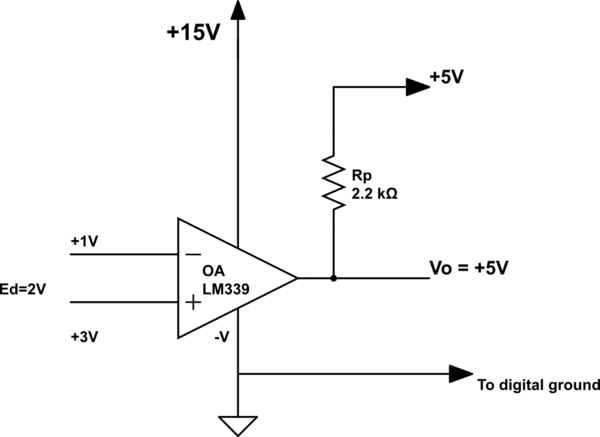The circuit diagram below is given in my book (written by Coughlin and Driscoll).

simulate this circuit – Schematic created using CircuitLab
Here it is said that, at the condition when \$ E_d=+2V\$, the output voltage will be \$V_o=+5V\$. But for an op amp, when the non-inverting voltage is higher than then inverting voltage, the output voltage will be \$+V_{sat}\$, which is approximately +15V.
Why is the output for this Op Amp IC (LM339) +5 Volts?
